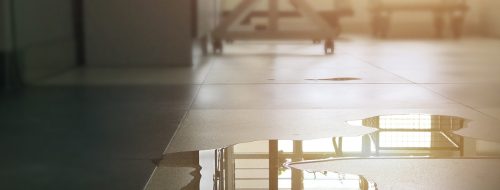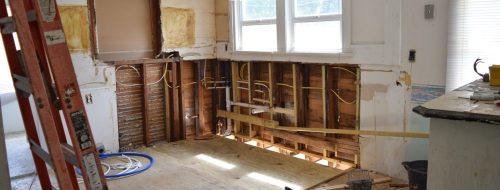High-Tech Thermal Imaging Inspections in Marietta and the Greater Atlanta Area
Thermal inspections are one of the most innovative tools in our restoration toolkit. After water damage, it’s not always obvious where the moisture is hiding. Water can travel behind walls, under flooring, and into tight spaces that look completely dry on the surface. That’s where thermal imaging gives us a clearer picture. By detecting temperature differences within building materials, we can spot hidden moisture pockets without tearing anything apart.
At Big Bear Restoration, we use thermal cameras to guide the entire water mitigation process—from assessing the damage to confirming everything’s fully dry. It helps us work faster, more accurately, and with less disruption to your home. When it comes to water damage, guessing is never good enough. Thermal inspections give us the facts we need to do the job right the first time.
What We’re Looking For With Thermal Imaging Inspections
This vital part of the water restoration process involves moving methodically through your home with a handheld infrared camera. Our technicians aim the device at every wall, ceiling, and floor surface, watching for temperature changes that reveal hidden moisture. These temperature shifts appear as colorful heat maps on our screen, helping us pinpoint exactly where water has spread.
During a thermal inspection, we’re looking for:
Explore Other Water Damage Services We Offer
Completing a water damage restoration project involves multiple steps; thermal inspections are just one part of that process.
Our Most Asked Thermal Inspection Questions
Thermal cameras don’t actually “see through” anything. Instead, they detect the surface temperature of whatever they’re aimed at. With materials like metal and glass, the reading can be misleading.
For example, glass tends to reflect infrared energy rather than emit it, which can create distorted readings. Metal can do the same, showing the temperature of reflected objects instead of its surface.
That’s why our trained technicians know how to avoid false readings and use additional tools, like moisture meters, to confirm what’s really going on behind the scenes.
Thermal imaging is typically used early in the process, right after the initial emergency response. Once the water has been removed from the space, we scan the affected areas to understand how far the moisture has spread. It’s also used again after structural drying to confirm that everything is dry, including the places you can’t see or touch.
A complete thermal inspection takes about 30 to 60 minutes for most residential properties. Larger homes or those with extensive damage may take longer, especially if we check multiple floors, crawl spaces, or attics.
Our goal isn’t to rush; it’s to catch every last trace of moisture so we can build a solid restoration plan.
In many cases, yes. If thermal imaging is part of a broader restoration effort due to a covered event—like a burst pipe, storm, or accidental overflow—it can be included in your claim. We work directly with your insurance provider to make sure everything is appropriately documented, including scans supporting your case.
Once we’ve completed the thermal scan, we’ll walk you through our findings. You’ll see exactly where moisture is hiding, how far it’s spread, and what areas need special attention. From there, we map out a step-by-step remediation plan that might include structural drying, dehumidification, or targeted repairs.
If thermal imaging is done at the end of the process, it serves as proof that everything is dry and safe, something your insurance company will appreciate just as much as you do.
Clean, Grey, or Black? The Three Kinds of Water Damage Explained
When water enters your home or business unexpectedly, it’s easy to see only the mess…
How a Single Company Simplifies Restoration and Reconstruction
When disaster strikes, like a burst pipe flooding your living room, a fire leaving smoke…

